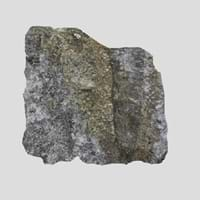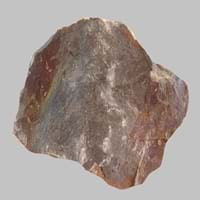Marl and Hawaiite
Definition
Definition
Marl is an unconsolidated sedimentary rock consisting of clay and lime
Hawaiite is volcanic rock that resembles basalt. It is an olivine basalt with intermediate composition between alkali olivine and mugearite
History
Origin
Unknown
Hawaii Islands
Discoverer
Unknown
Joseph Iddings
Etymology
From Old French marle, from Late Latin marglia
From Hawaii Islands
Class
Sedimentary Rocks
Igneous Rocks
Sub-Class
Durable Rock, Soft Rock
Durable Rock, Medium Hardness Rock
Family
Group
Not Applicable
Volcanic
Other Categories
Fine Grained Rock, Opaque Rock
Opaque Rock
Texture
Texture
Earthy
Glassy, Massive, Porphyritic, Scoriaceous, Vesicular
Color
Beige, Brown, Green, Grey, White
Black, Brown, Light to Dark Grey
Maintenance
Less
Less
Durability
Durable
Durable
Water Resistant
Yes
Yes
Scratch Resistant
No
Yes
Stain Resistant
No
No
Wind Resistant
No
Yes
Acid Resistant
No
No
Appearance
Rough and Dull
Dull and Soft
Uses
Architecture
Interior Uses
Decorative Aggregates, Floor Tiles
Decorative Aggregates, Floor Tiles, Flooring, Homes, Hotels, Interior Decoration, Kitchens
Exterior Uses
As Building Stone, Roof Tiles
As Building Stone, As Facing Stone, Paving Stone, Garden Decoration, Office Buildings
Other Architectural Uses
Curbing
Curbing
Industry
Construction Industry
Cement Manufacture, Construction Aggregate, for Road Aggregate, Making natural cement, Raw material for the manufacture of mortar
As Dimension Stone, Cobblestones, Rail Track Ballast, Roadstone
Medical Industry
Not Yet Used
Not Yet Used
Antiquity Uses
Artifacts, Jewellery, Sculpture, Small Figurines
Artifacts
Other Uses
Commercial Uses
Creating Artwork, Soil Conditioner
Creating Artwork, Sea Defence
Types
Types
Clay Marl ,Blue Marl, Red Marl, High Bank Marl, Shell Layer Marl, Under Shell Layer Marl, Sand Marl, Green Marl, Grey Marl and Clayey Marl
Not Available
Features
Generally rough to touch, Is one of the oldest rock, Splintery, Very fine grained rock
Has High structural resistance against erosion and climate, Very fine grained rock
Archaeological Significance
Monuments
Not Yet Used
Used
Famous Monuments
Not Applicable
Easter Island in the Polynesian Triangle, Pacific Ocean
Sculpture
Used
Not Yet Used
Famous Sculptures
Data Not Available
Not Applicable
Pictographs
Used
Used
Petroglyphs
Used
Used
Figurines
Used
Not Yet Used
Fossils
Present
Absent
Formation
Formation
Marl forms when very fine-grained clay particles are deposited in water which settles at the bottom of water bodies and are compacted by overlying sediment; the water squeezes out and hence forming Marl rock.
Hawaiite is a fine-grained, hard rock that forms when bits of lava shoot out of volcanoes and reach the Earth's surface.
Composition
Mineral Content
Calcite, Clay, Dolomite, Gypsum, Micas, Pyrite, Quartz
Olivine, Plagioclase, Pyroxene
Compound Content
Aluminium Oxide, NaCl, CaO, Iron(III) Oxide, Silicon Dioxide
Aluminium Oxide, CaO, Iron(III) Oxide, FeO, Potassium Oxide, MgO, MnO, Sodium Oxide, Phosphorus Pentoxide, Silicon Dioxide, Titanium Dioxide
Transformation
Metamorphism
No
Yes
Types of Metamorphism
Not Applicable
Impact Metamorphism
Weathering
Yes
Yes
Types of Weathering
Biological Weathering, Chemical Weathering
Biological Weathering
Erosion
Yes
No
Types of Erosion
Chemical Erosion, Coastal Erosion, Water Erosion, Wind Erosion
Not Applicable
Properties
Physical Properties
Hardness
2-3
6
Grain Size
Very fine-grained
Not Applicable
Fracture
Conchoidal
Conchoidal
Streak
White
Not Available
Porosity
Highly Porous
Less Porous
Luster
Dull
Not Available
Compressive Strength
Not Available
37.40 N/mm2
28
Cleavage
Not Available
Not Applicable
Toughness
2.6
Not Available
Specific Gravity
2.2-2.8
Not Available
Transparency
Opaque
Opaque
Density
2.4-2.8 g/cm3
Not Available
Thermal Properties
Resistance
Heat Resistant, Impact Resistant
Heat Resistant, Pressure Resistant, Wear Resistant
Reserves
Deposits in Eastern Continents
Asia
India, Pakistan, Russia
India, Russia
Africa
Ethiopia, Kenya, Morocco, South Africa
South Africa
Europe
Austria, France, Germany, Greece, Italy, Romania, Scotland, Spain, Switzerland
Iceland
Others
Not Yet Found
Hawaii Islands
Deposits in Western Continents
North America
USA
Canada, USA
South America
Colombia, Ecuador, Peru
Brazil
Deposits in Oceania Continent
Australia
New South Wales, Victoria, Western Australia
Not Yet Found
All about Marl and Hawaiite Properties
Know all about Marl and Hawaiite properties here. All properties of rocks are important as they define the type of rock and its application. Marl belongs to Sedimentary Rocks while Hawaiite belongs to Igneous Rocks.Texture of Marl is Earthy whereas that of Hawaiite is Glassy, Massive, Porphyritic, Scoriaceous, Vesicular. Marl appears Rough and Dull and Hawaiite appears Dull and Soft. The luster of Marl is dull while that of Hawaiite is not available. Marl is available in beige, brown, green, grey, white colors whereas Hawaiite is available in black, brown, light to dark grey colors. The commercial uses of Marl are creating artwork, soil conditioner and that of Hawaiite are creating artwork, sea defence.
|
||
|
||
|










